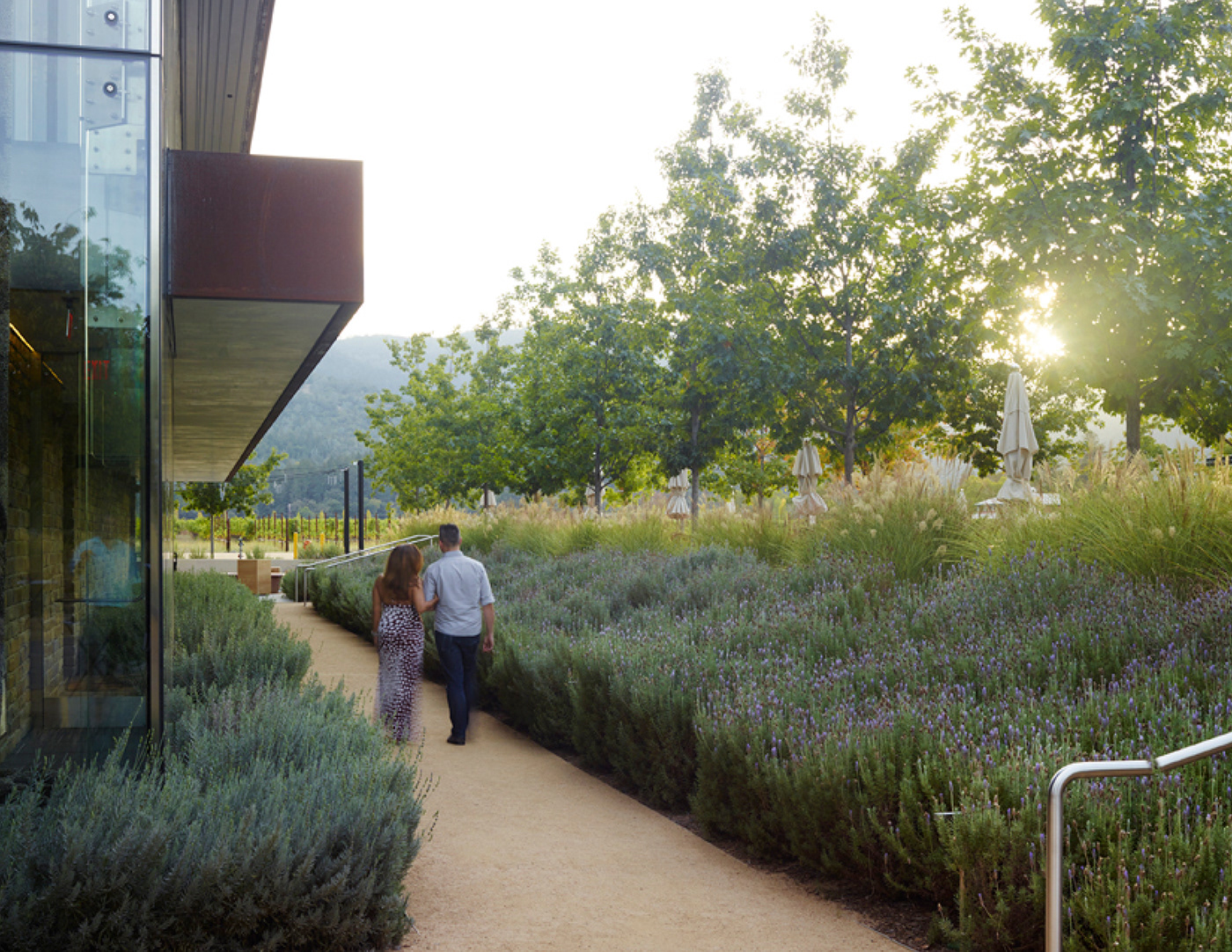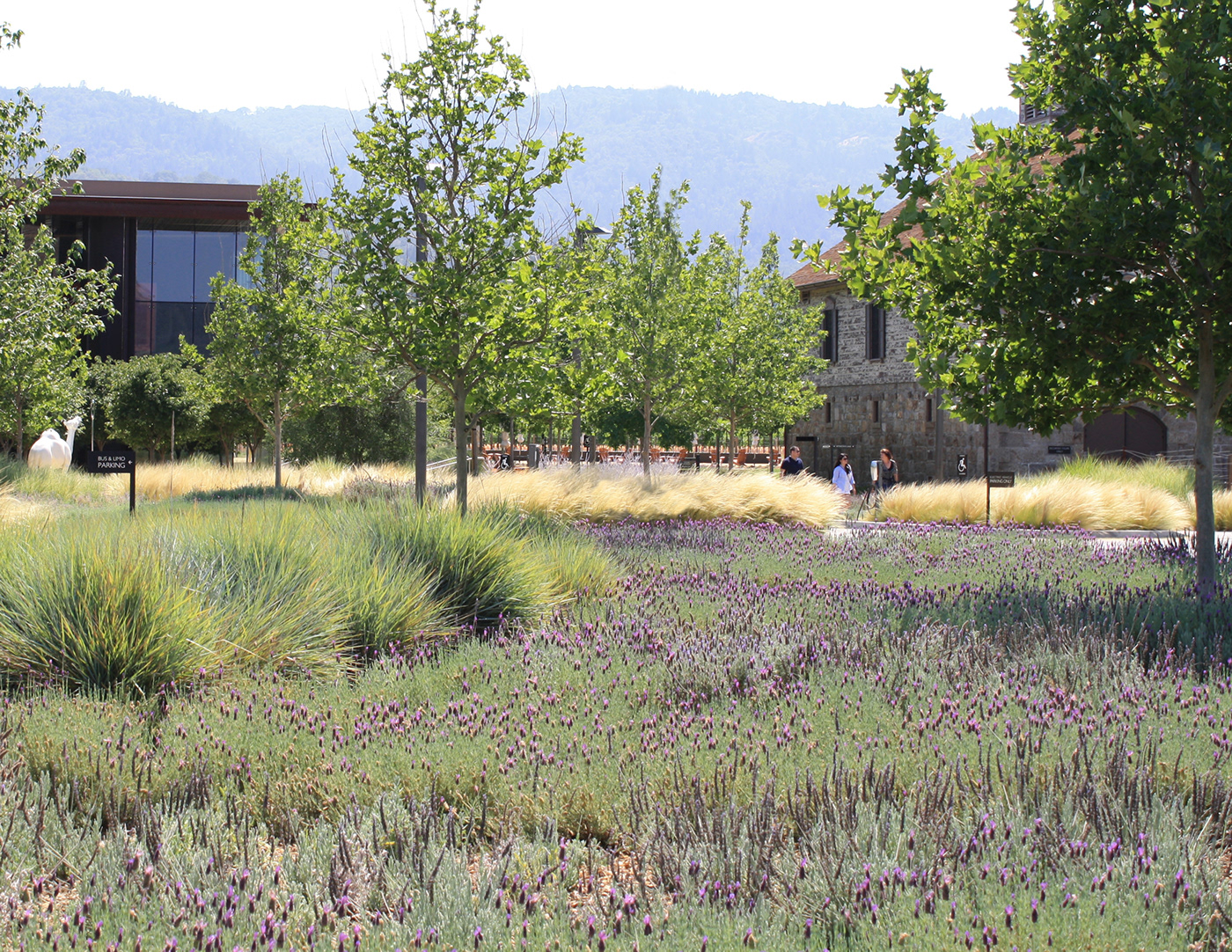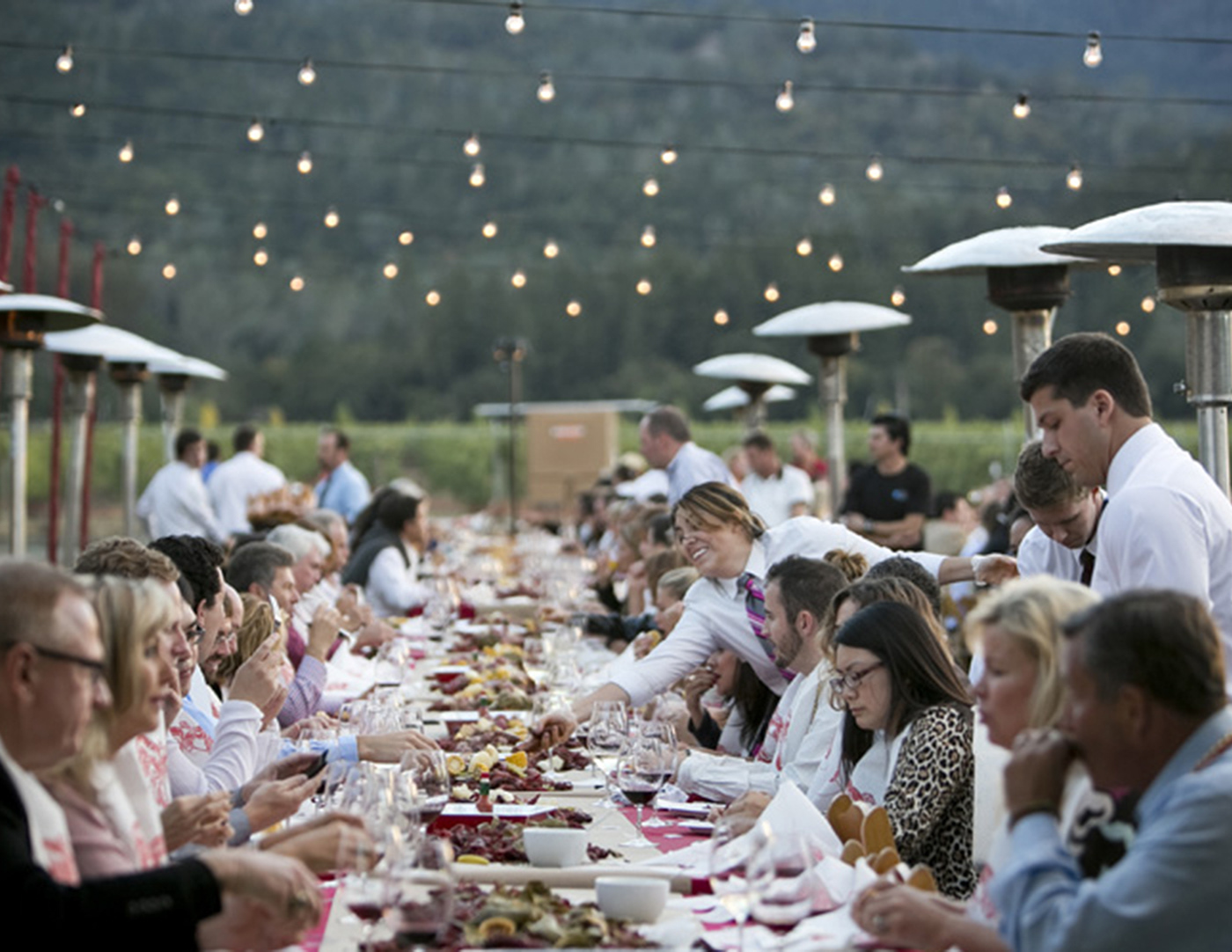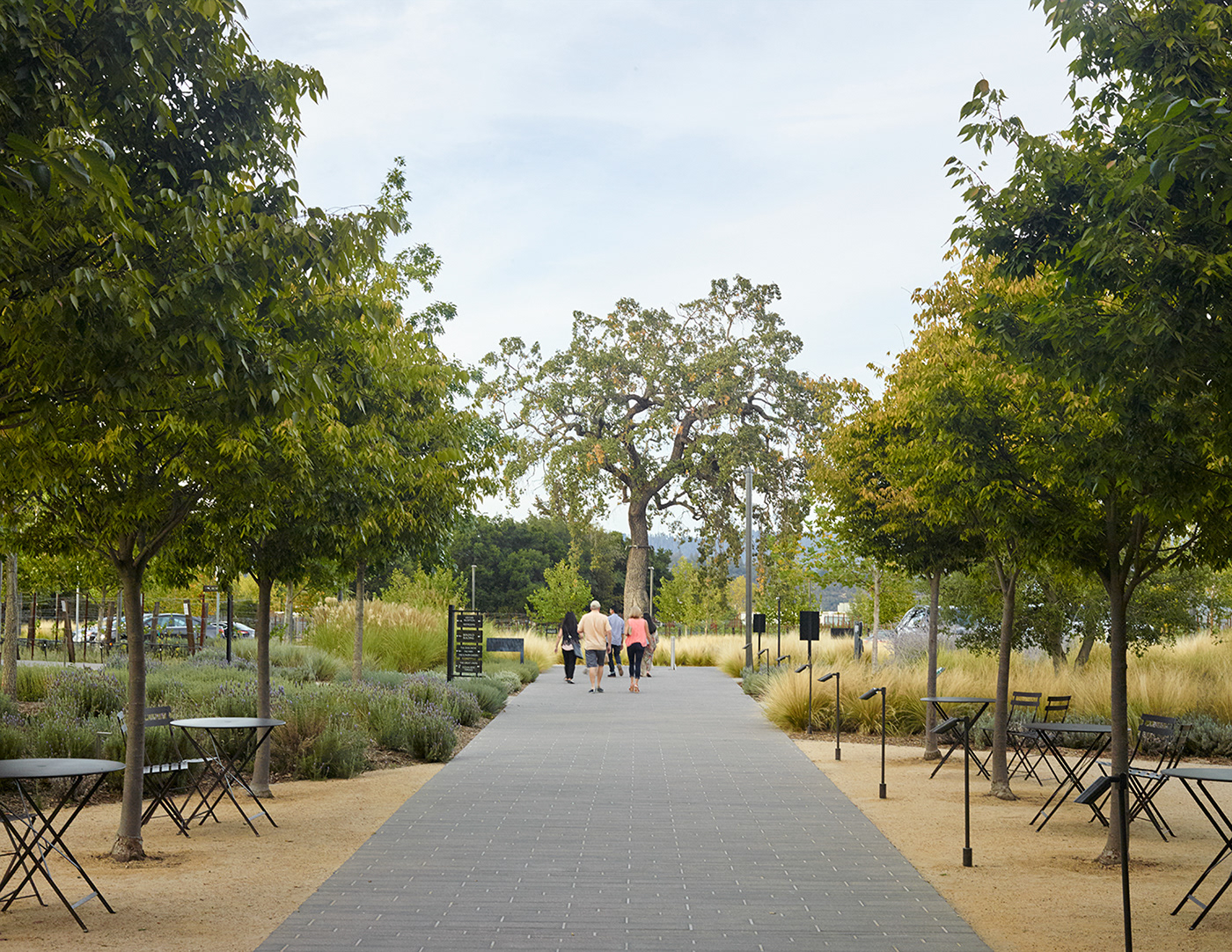
Hall Wines, St. Helena, California, photo courtesy Hall Wines, completion 2014. Originally an industrial winemaking vineyard with metal buildings and remnants of historic structures, Hall Wines has been reimagined as destination that celebrates the vineyard landscape and welcomes visitors in an immersive garden experience.








THIS NAPA VALLEY WINERY MARRIES LANDSCAPE, ARCHITECTURE AND ART TO WELCOME VISITORS TO AN HISTORIC MOUNTAIN VALLEY SITE.
A sensitive blend of modernism and tradition, the new and renovated facilities and gardens at Craig and Kathryn Hall’s Napa Valley winery expand their sizable production capability and provide a world-class hospitality destination for their growing brand. The existing vineyard was an industrial production facility, not meant to be a place for the public to visit. Historic structures were saved and the site is replanned to draw people to the interior. Arriving by a new entrance road, visitors are immediately greeted with the beauty of the site and the restored Bergfeld structure (1885) from the original winery. Paths encourage walking, meditation and immersion.
The renovated entry is planted with specimen shade trees, flowering perennials and grasses, which draw visitors through the working organic vineyards. A preserved valley oak (quercus lobata) is the organizing element of the entrance. A straight sightline connects this tree with the main entry to the new Visitor Center. Located along this walk, an arrival court beneath a grove of shade trees serves as a gathering area for winery tours. The silvery, reflective palette of building and landscape immerses visitors in art and nature.
The winery hosts music, culinary, and cultural events on a 6,500-SF Great Lawn adjacent to the renovated Peterson-Bergfeld historic building. At the vineyard’s edge, a gravel terrace with a long granite reflection basin, umbrellas, and lounge chairs encourages relaxation and appreciation of the wine-making process. Production vineyards and viewsof the Mayacamas Mountains are carefully framed. Low limestone walls divide the northern gardens into discrete rooms dedicated to cut flower production, an organic kitchen garden, and the Olive Grove which doubles as a rotating gallery for art installations.
